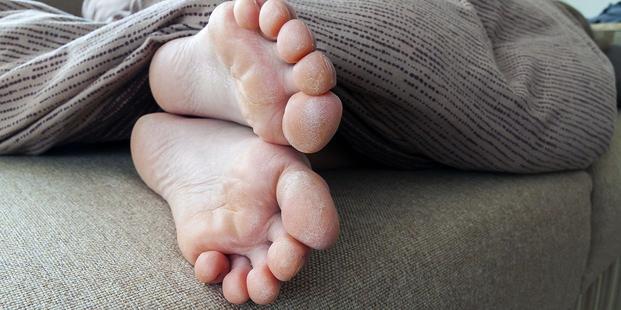
Photo:BigStock
Wednesday, March 4, 2020
5 minutes
Photo: BigStock
Wednesday, March 4, 2020
5 minutes
Dead or loose skin that forms on the feet is how the feet naturally exfoliate and remove dead cells. It can accumulate due to lack of moisture if the feet are constantly shod, with closed socks or from friction from walking or running. It can also form if they are not cared for or washed regularly. Also, the underside may appear dry, cracked, loose, or hanging.
It's usually not painful, unless it's the result of athlete's foot, eczema, or another type of infection. If this is suspected to be the case, it is necessary to see a doctor for treatment. Otherwise, it is normal to remove dead skin for cosmetic reasons or because it is more comfortable. Under this premise, what methods can you use to get rid of them?

A pumice stone is a natural lava stone that can help remove dead skin and calluses, according to pharmacist Isabel Fustero in her article Foot Care. To use it, you have to immerse it in warm water, just like your feet, for 10 minutes to soften them. The stone is then gently moved in a circular or lateral motion around the foot.
It's important to focus on removing the top layer and not the entire area of dead skin, which will help promote healthy cell turnover. When finished, a lotion or oil is applied to help soften. Pumice should never be used on injured or sore areas.
Many nail salons offer paraffin wax as an adjunct to a pedicure treatment. Paraffin is a soft wax that melts at an average temperature of around 51°C and should not be hot enough to burn or irritate. But you can also do a paraffin wax treatment at home using a bath at home, melting it beforehand and then dipping them.
During a paraffin treatment, your feet will be dipped several times. After applying several layers of wax, they are wrapped in plastic. When the wax hardens, it can be removed. Any dead skin will be removed along with the wax. Paraffin should not be used if you have poor blood circulation, a rash, or an open sore. And also if sensation in the feet has been lost, such as from diabetic neuropathy.
Most drug stores sell different over-the-counter foot scrubs and one with granules that will help remove dead skin. But you can also make one at home by diluting two tablespoons of salt in equal amounts of baby oil and lemon juice. To use a scrub, it is applied directly to the foot and gently rubbed in with the palm of the hand, or with a brush or sponge. After carrying out this process, rinse well with warm water.
Oatmeal can be useful for exfoliating and removing dead skin. Equal parts of oats are mixed with rosewater or milk to make a paste. It is then smeared on the feet and allowed to sit for 20 to 30 minutes. It is recommended to use a brush, rinse with cold water and allow them to dry. Lastly, a foot lotion is applied.
Epsom salt is a crystalline form of magnesium sulfate, a mineral compound. Feet can be soaked in it, which can help exfoliate and soften dry, cracked feet. This, in turn, helps remove dead skin.
To do this, pour half a cup of Epsom salt into a bath or tub filled with warm water. They are then soaked for up to 20 minutes at which time a pumice stone or brush can be used to help remove when dry. To create an Epsom salt scrub, in the shower or bath, mix a handful with a tablespoon of olive oil in your hand or on a bath sponge. Finally, it is gently rubbed into damp skin to exfoliate, smooth and remove any slack before rinsing with water.
Vinegar baths can help soften feet and remove dead, dry, or cracked skin. Almost any type of vinegar can be used, apple cider vinegar or white vinegar are popular choices, and they are in almost every kitchen. Cold water is used to create the soak, as hot water can be more drying. One part vinegar to two parts water serves as a general guide. They soak for 5 to 10 minutes.
She then applies moisturizer, Vaseline, or coconut oil before putting on her socks to seal in moisture after soaking in the vinegar. This treatment is done only a few times a week.
About the author:
Veronica Mollejo
… know more about the author
Related